| Umělec magazine 2002/3 >> Xenia Galjajeva From her first book of stories 1999/2001 | List of all editions. | ||||||||||||
|
|||||||||||||
Xenia Galjajeva From her first book of stories 1999/2001Umělec magazine 2002/301.03.2002 art projects | en cs |
|||||||||||||
|
"Preface
Shall I explain myself? My reasons for taking photos and the stories that go with them? It all started when I came from Russia to the Netherlands: I was desperately homesick. I missed people and places — everything familiar and so different. Nobody in the Netherlands could imagine my life in Russia and the other way around — I didn’t like this “double life.” On one of my vacations, I got an old camera from somebody — it turned out to be a good solution to the problem. Instead of telling “how it is over there,” I would just get out the photos, so I could give the impression without troubling myself with words. I didn’t have to answer the same questions over and over again — just look for yourself and draw your own conclusions. And isn’t it wonderful to have tangible proof of everything that is dear to me? It is a secure feeling. Whatever happens, I gain, because I take care not to lose what I have already — it helps keep the optimist in me awake and makes it easier to go for new experiences: Why not check things out; at least I always have something to come back to. Burning the bridges is too extreme a measure; I prefer to have it all. Taking photos turned out to be easy. In the beginning, when you don’t know any tricks and find them out for yourself, every result is satisfying. I got addicted and the whole thing transformed into almost a passion. Taking photos changes your way of looking — a tiny camera installs itself in the eyes that keeps on making snap-shots and creating scenes non-stop, whether you ask for it or not. Those virtual photos are as vivid as the actual ones; the only difference is that I cannot show them to anyone, and I would prefer to share the information. The photos I take are not exactly about what I see, but what I choose to see. The atmosphere that I look for — warm and slightly absurd — is not always there, so I have to search for it, provoke the situations or even fake them — that doesn’t make it less real because, in my opinion, it could be like that, or in fact it should be like that — just because I like it that way. The stories behind the photos always stay flexible, depending on what I find interesting to extract from my memories and facts at that point; what I would like to tell or what somebody wants to hear. And whatever I tell or see, I believe in — at least for that moment. So there you are. The White Horse The photo is taken on an island, which is in the center of Pskov Lake in Russia. A fact: The lake is one of the biggest in Europe. And the island is very small — one can walk all around it in half an hour — so it seems to be cut out of the rest of the world, there is just water everywhere and the horizon that disappears when water is the same color as the sky. There is a fisherman’s village. They have boats, cows, a church, three shops, two tractors, a car (what do they use it for?), a holy man and a white horse that belongs to nobody. The white horse is wandering around the island — the natives say it is crazy. A crazy thief-horse. It follows tourists that come for the elder, snatches their bags and tears them to pieces. The elder is a very kind old man with white hair and almost transparent skin. He has been living on the island — he was a priest in a church there, I believe — and talking to everybody who wanted to talk to him, all of them desperate for a kind word. Twice a day a big boat full of troubled people wanting advice for their lives comes to the island. The boat starts from a town on the shore and it can never take in the crowd waiting for it, so some of the most desperate ones try to swim after it and get on when the boat is already underway. The islanders make money by offering pilgrims a ride by motorboat for incredible sums of money. It turned into a mafia of sorts with strict rules and a motorboat boss who collects the money and gives each motorboat operator his share. The elder tries to receive everybody who comes to visit him; he stands holding to the door of his house while people come up to him in turns; when he gets too exhausted, he goes inside for 15 minutes’ rest and then comes out again. There are several women who look after him and bring him food. That island is one of the places I am very much attached to. In my most idealistic, impractical dreams, I would like to live there. I would like to own it, as a matter of fact, so that I would have the power to remove all the ugly things from it to clean the essential atmosphere. The View from the Kitchen Window The view from the kitchen window — I’ve been staring at it every day for almost 20 years. I’ve been drawing it and painting it and making photos of it. I’m addicted to looking at it, even when it’s completely dark and you can’t see a thing. And the kitchen table is standing right near the window, so you can always look outside, it does not matter where you sit. Because the kitchen itself is so small, you always have the same view that hasn’t changed at all for years. It is a very quiet place. Not many people pass by and nothing ever happens, except when neighbors in the opposite house beat each other up, but that is something I don’t like to look at. The view doesn’t have any other entertaining values except that it is beautiful and so familiar to me to the point that it becomes abstract, quieting and relaxing. That is one of the reasons why the kitchen is my favorite place of the house. I spend most of my time there when I’m at home; the best place for reading or writing, or thinking or talking. And handy as well because I can reach all the necessary objects from the stove, sink and cupboard without getting up from my chair. The best times there I have at night when everybody is sleeping — all to myself and no obligations; in a word, freedom. That’s when I get the nicest thoughts and the best plans. The Story of My Mouse I always wanted to have a pet and my parents got me a dog — a Dachshund with a harelip. It was called Zayats (that means “hare”). The dog is very sweet, but that is absolutely no use to me — it chose to ignore me from the very beginning and is devoted body and soul to my father. (See now who is the head of the house!). They have the same characteristics, the same way of walking and they always show how much they love each other. Then I owned a parrot, which was far too stupid to communicate with. It was an idiot from birth — it spent all its time staring in the mirror and being moody, so I gave it away to my neighbors who like to take care of sick ones. My next choice was for a turtle — a reasonable pet, slow and portable — but that dream never came true. Instead I found myself in possession of a three-week-old gray rat that looked just like an ordinary mouse, so Mouse it was called. My parents started to take care of it from the first minute. They said that such a baby needs a lot of space, attention and fun, and installed it on the kitchen table, where it could always find food and company. Mouse was to sleep in a sugar-bowl — such freedom I was never allowed when I was small. They tried to teach it tricks, like appearing out of the breadbasket when we had guests. They took it out to the summerhouse to get fresh air and vegetables. My father believes that everyone should be friends, including Mouse and Zayats. So he took them for walks — Mouse riding on the dog’s back trying hard not to fall off. Then the tragedy came. Zayats’ instincts awoke and he bit the rat when it happened to stroll under its nose; Mouse was so small and tender that a slight bite turned out to be fatal. Very sad. Another example of unsuccessful friendship. My father was so upset, that he blamed me for my inability to take care of anybody, myself included. "
01.03.2002
Recommended articles
|
|||||||||||||
|
04.02.2020 10:17
Letošní 50. ročník Art Basel přilákal celkem 93 000 návštěvníků a sběratelů z 80 zemí světa. 290 prémiových galerií představilo umělecká díla od počátku 20. století až po současnost. Hlavní sektor přehlídky, tradičně v prvním patře výstavního prostoru, představil 232 předních galerií z celého světa nabízející umění nejvyšší kvality. Veletrh ukázal vzestupný trend prodeje prostřednictvím galerií jak soukromým sbírkám, tak i institucím. Kromě hlavního veletrhu stály za návštěvu i ty přidružené: Volta, Liste a Photo Basel, k tomu doprovodné programy a výstavy v místních institucích, které kvalitou daleko přesahují hranice města tj. Kunsthalle Basel, Kunstmuseum, Tinguely muzeum nebo Fondation Beyeler.
|

























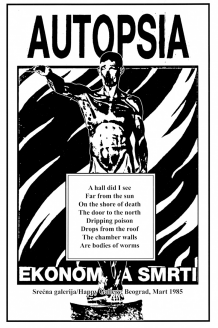




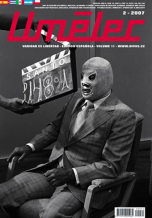
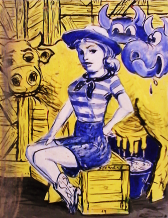
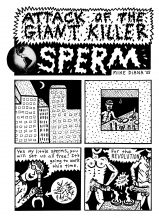
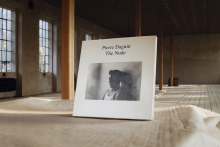


 We Are Rising National Gallery For You! Go to Kyjov by Krásná Lípa no.37.
We Are Rising National Gallery For You! Go to Kyjov by Krásná Lípa no.37.
Comments
There are currently no comments.Add new comment